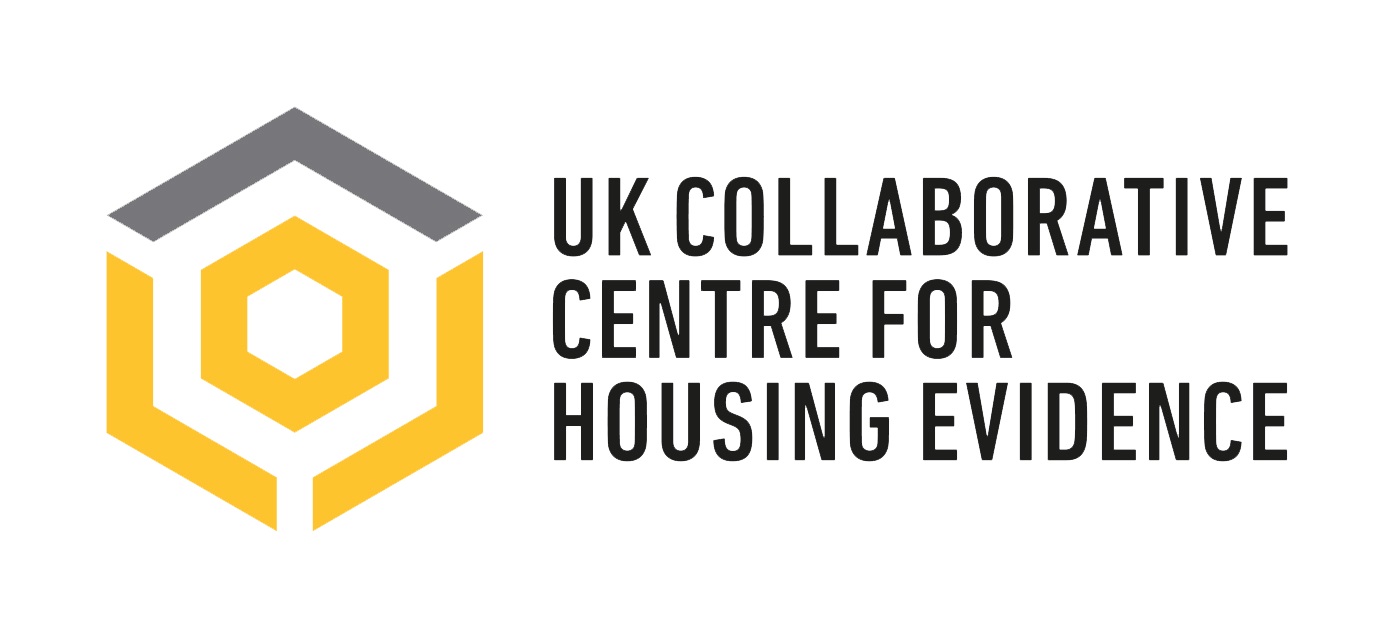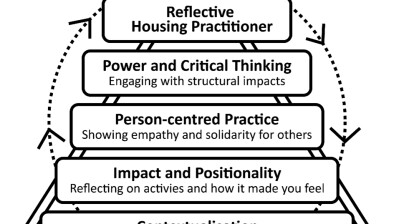Nicky Imrie: Oral histories can shed light on LGBTQIA+ people’s experiences of home and housing

In part one of a two-part blog series, Nicky Imrie of OurStory Scotland gives a background on her own experiences and outlines how oral histories can be a useful tool for understanding LGBTQIA+ people’s housing experiences.
OurStory Scotland is an LGBTQIA+ community-led, voluntary and charitable organisation that exists to collect, archive, present and celebrate the life stories and experiences of fellow LGBTQ+ people living in Scotland.
Since its inception in 2001, the archive has grown to over 100 life-story and thematic audio oral-history recordings and more than 200 handwritten episodes charting the lives of LGBTQIA+ people.
This is a story about stories. To set the scene, allow me to begin with one of my own.
In 2021, I began studying part-time on the MSc Housing Studies course at the University of Glasgow after almost 20 years of working in community heritage and academic architectural history. As a queer person and in my previous work, I had become interested and involved in mapping and recording LGBTQIA+ histories, places and stories in Scotland. I joined the LGBTQIA+ community-history organisation OurStory Scotland as a volunteer and have helped to present extracts from archived oral-history recordings of real-life stories of LGBTQIA+ people living in Scotland at community events and training workshops.
One particular workshop for local authority HR professionals, none of whom were LGBTQIA+ themselves, made a profound impact: participants openly admitted their ignorance about the details, significance and implications of LGBTQIA+ people’s everyday lived experiences and identities and were distressed to discover what they didn’t know. I was shocked that people working in people-focused roles possessed such limited knowledge. In 2022, when I came to research and write a Housing Studies assignment, which investigated LGBTQIA+ people’s experiences of prejudice and discrimination when accessing social housing and homelessness services, I was again, perhaps rather naively, shocked to discover a limited number of recent academic articles and policy documents, quantitative and qualitative data, about LGBTQ+ people’s experiences in Scotland.
Thus, the invitation on the CaCHE blog in July 2023 to contribute to future work on LGBTQIA+ people and housing got me thinking about if and how the stories in OurStory Scotland’s archive of oral-history interviews and handwritten episodes could add to or enhance knowledge and understanding of LGBTQIA+ people’s experiences of housing and homelessness. By sharing a selection of extracts from that archive, this blog post endeavours to shed light on and offer further insight into LGBTQIA+ people’s experiences with home and housing in Scotland.
What is oral history?
Oral history is a qualitative research method that focuses on the past, stories, experiences, and perspectives that are not usually found in official histories of places or significant events. It is practised by a variety of different people: in academia in a wide range of arts, humanities and social-science disciplines; in legal and social-work settings; and community-led heritage.
The term ‘oral history’ means “both the act of recording and the recording that is produced” (Abrams, 2016, p. 2.). The recording, usually audio and sometimes video, is conducted between an interviewer and usually one interviewee, though sometimes with a small group of interviewees. The interviewer generally asks a limited number of questions and spends most of the recording listening closely to the stories narrated by the interviewee/s prompted by the questions. A full transcript or a summary of the oral history recording is always produced and accompanies the recording when archived. The interview, its recording, the transcript or summary and how all these are interpreted are all constituent parts of the oral history process. (Abrams, 2016, p. 9.)
My own experience of oral history originates in community heritage; in a previous job, I and colleagues received oral-history training from the Edinburgh-based Living Memory Association and went on to train adults in local-history groups and P6 and 7 pupils in several locations across Scotland to record everyday stories and lived experiences of their towns in the mid-twentieth century.
Oral history and housing
First-hand, lived experiences gathered by means of oral history interviews have contributed rich and valuable material to academic research on housing, home and domestic life in Scotland. As far as I can tell, while first-person testimonies form the vital foundations of community-led housing activism and research, such as the Glasgow Housing Struggle Archive and Cathy McCormack’s activist writings and performance archived at Glasgow Women’s Library, oral-history recordings seem to remain, unfortunately, conspicuously absent.
Reflections on major developments in housing provision have been captured, for instance, in Seán Damer’s Scheming: A Social History of Glasgow Council Housing, 1919–1956 (2018), which was based on interviews with tenants and housing officers carried out in 1988–1991 (Damer, 2018, pp. ix–x.), and in Lynne Abrams, Ade Kearns, Barry Hazely and Valerie Wright’s Glasgow: High-rise homes, estates and communities in the post-war period (2020), which drew on questionnaires and interviews undertaken from 2015 (Abrams et al, 2020, p. 22; p. 25.)
Knowledge and understanding of the combined significance and impact for LGBTQ+ people of identity and where and how they live have advanced thanks to research participants narrating their own stories from the recent and more distant past, for example, Amy Tooth Murphy’s work on “domesticity in post-war lesbian oral history” (Tooth Murphy, 2013.); Peter Matthews and Chris Poyner’s work on LGBT+ people’s experiences of living in so-called deprived neighbourhoods (Matthews and Poyner, 2019.) and with Richard Kjellgren on LGBTQ experiences of homelessness and identity, insecurity and “home(o)normativity” (Matthews, Poyner and Kjellgren, 2019.); and Briege Nugent’s research for Frontline Fife Homelessness Services, LGBT+ Experiences of Homelessness in Fife (2020).
Elsewhere, Tooth Murphy has written about the importance of her feminist practice of oral history in marginalised communities, gaining trust and building intimacy and rapport with interviewees through reciprocity. In her work with older lesbians, her own life experience and outward visibility as an out lesbian fostered this reciprocity, which she describes as “insider status”. This, she explains, “was hugely influential” in her research, “aiding in establishing rapport, building trust, and, as a result, eliciting in-depth and richly textured interview responses” (Tooth Murphy, 2020, p. 37.). She continues,
Of course, this is not to say that all LGBTQ people are the same, or even that they share a majority of experiences. But in the case of LGBTQ oral histories, the perception of this shared identity is invaluable in overcoming many other social and cultural differences, placing the emphasis on a mutual understanding of the issues faced as members of a marginalised and historically oppressed group.
(Tooth Murphy, 2020, p. 37.).
For OurStory Scotland, ‘insider status’ and shared identities have also proved invaluable. New interviewees have been found via word-of-mouth recommendations and invitations in personal and wider community networks, and interviews have been conducted in private, comfortable and safe places, often the interviewee’s home, over tea and cake (Valentine, 2008, pp. 5–6), while episodes have been gathered at LGBTQIA+ community events. And, most significantly, to echo Tooth Murphy, we have ‘elicited in-depth and richly textured’ life story and thematic interviews and handwritten episodes, which we will turn to – finally! – now.
In part two, Nicky will present various stories from the OurStory Scotland archive, which recount LGBTQIA+ people’s experiences with home and housing.
- This blog was originally published by the UK Collaborative Centre for Housing Evidence (CaCHE).









